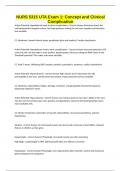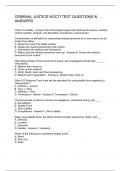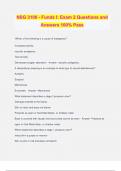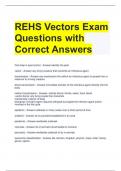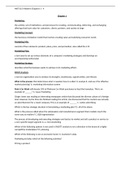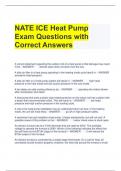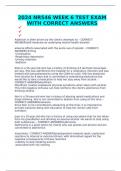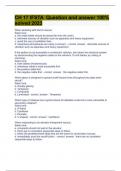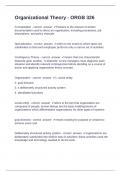Exam (elaborations)
NURS 5315 UTA Exam 1: Concept and Clinical Complication
- Course
- Institution
NURS 5315 UTA Exam 1: Concept and Clinical Complication Action Potential: Hypokalemia leads to what complications - Correct Answer Potassium leaves the cell leaving behind negative anions, cell hyperpolarizes making the cell more negative and therefore less excitable CC: Weakness, Smooth Muscle...
[Show more]
